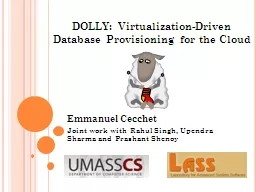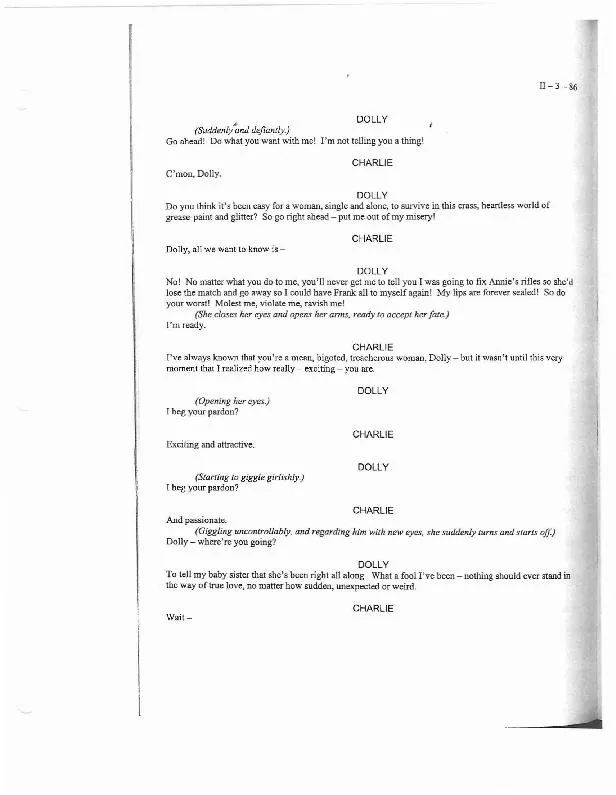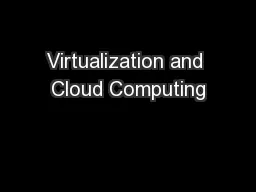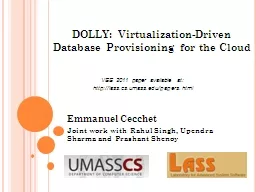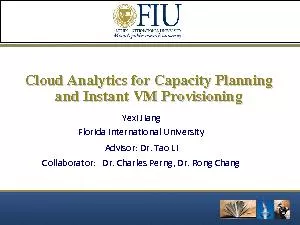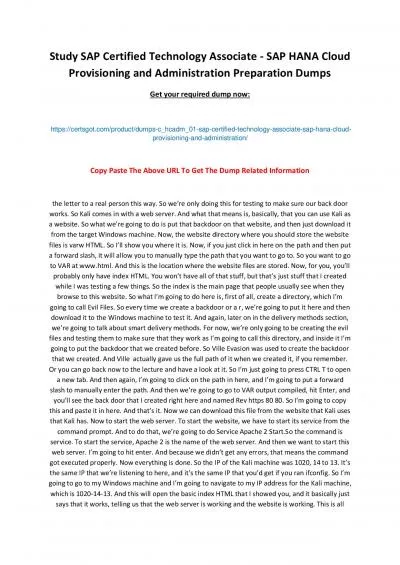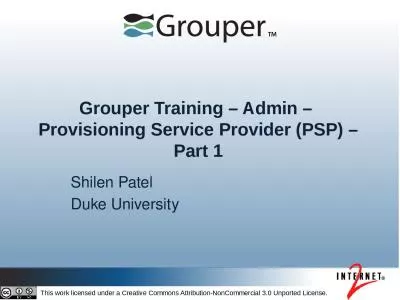PPT-DOLLY: Virtualization-Driven Database Provisioning for the Cloud
Author : natalia-silvester | Published Date : 2018-11-03
Emmanuel Cecchet Joint work with Rahul Singh Upendra Sharma and Prashant Shenoy THE CLOUD Virtualization Pay as you go Elasticity Internet Frontend Load balancer
Presentation Embed Code
Download Presentation
Download Presentation The PPT/PDF document "DOLLY: Virtualization-Driven Database Pr..." is the property of its rightful owner. Permission is granted to download and print the materials on this website for personal, non-commercial use only, and to display it on your personal computer provided you do not modify the materials and that you retain all copyright notices contained in the materials. By downloading content from our website, you accept the terms of this agreement.
DOLLY: Virtualization-Driven Database Provisioning for the Cloud: Transcript
Download Rules Of Document
"DOLLY: Virtualization-Driven Database Provisioning for the Cloud"The content belongs to its owner. You may download and print it for personal use, without modification, and keep all copyright notices. By downloading, you agree to these terms.
Related Documents

